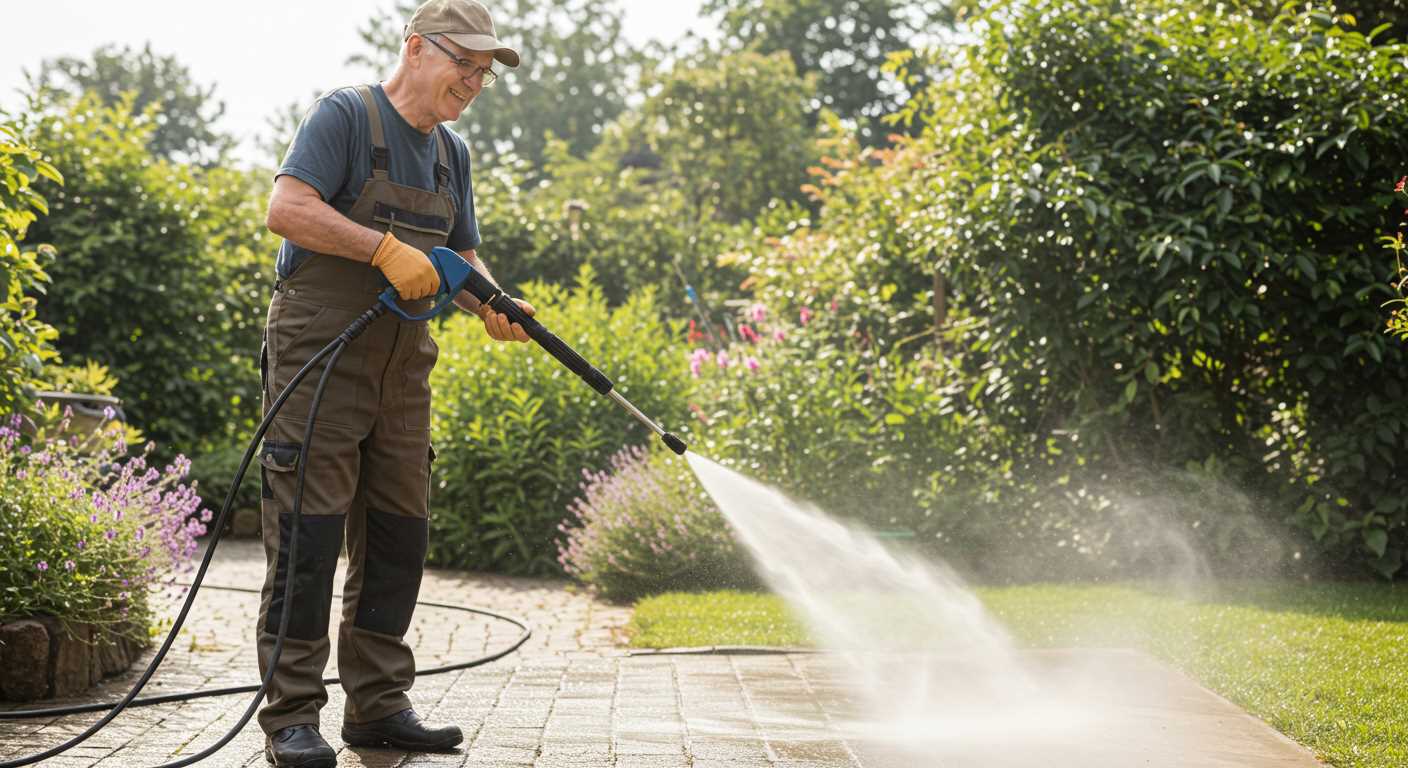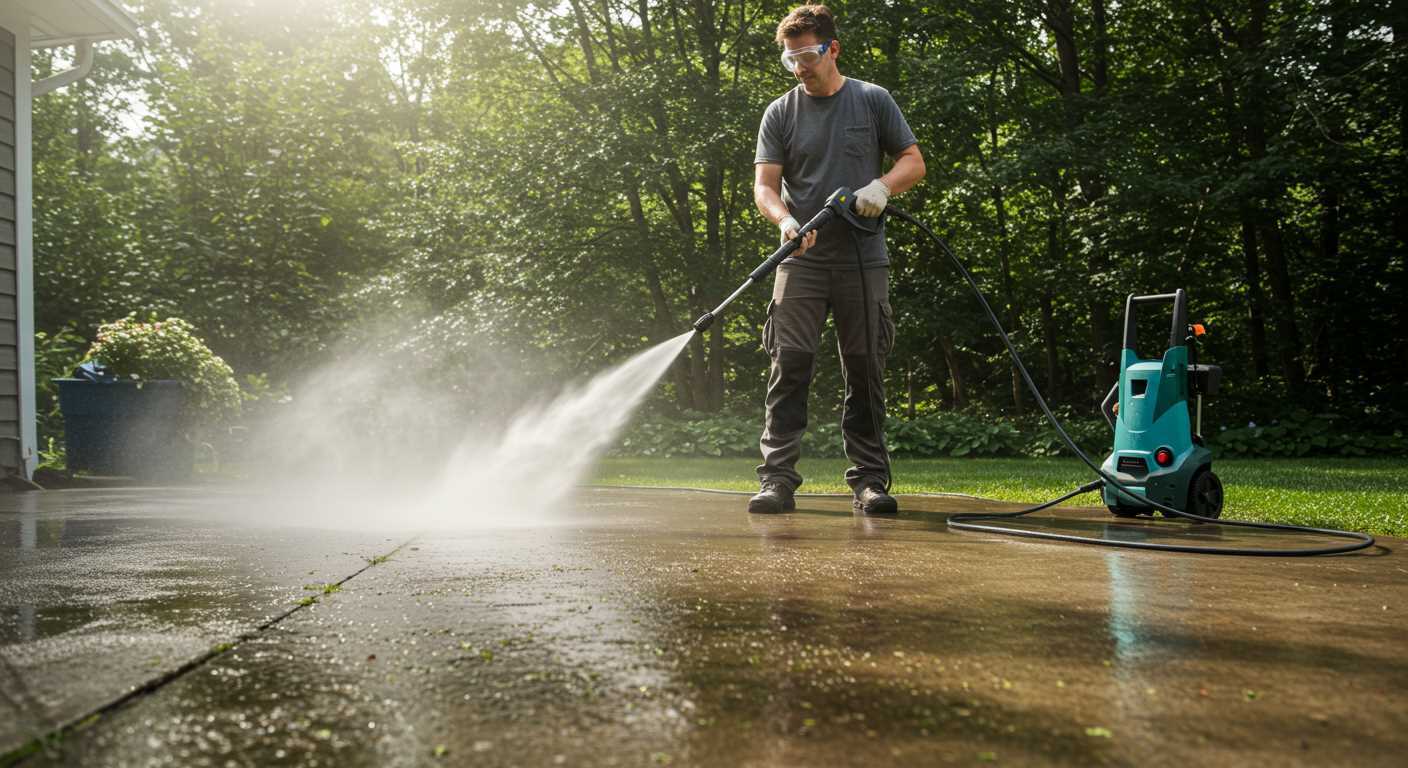



Begin by ensuring your machine is disconnected from any power source. This avoids any accidental activation during the assessment. Check for visible leaks or cracks that may indicate issues with the hydraulic components. If you notice any water escaping from the enclosure or connections, it typically suggests a need for immediate repair.
Next, examine the fluid intake to confirm it is clean and unobstructed. A blocked water filter can lead to performance problems, so it’s essential to remove any debris. After cleaning the intake, reconnect the device and observe operational sounds. Unusual noises can signal internal failures or misalignment within the mechanism.
Run the unit and evaluate the water flow at the nozzle. A weak or erratic stream indicates inadequate pressure generation. If the output doesn’t match the specified rate in the manual, consider inspecting the seal on the inlet valve, as wear can impede performance significantly. Making these checks will help ensure your equipment operates effectively and reliably.
Method for Assessing Cleaning Equipment’s Mechanism
Firstly, ensure that the device is unplugged and disconnected from water supply. Check for visible leaks on the assembly. If moisture is present, it may indicate a malfunctioning seal or fitting.
Simple Checks

Execute these straightforwardsteps:
- Inspect the inlet filter for dirt. A clean filter allows for optimal flow.
- Examine the hose connections. Tighten any loose fittings to prevent leaks.
- Verify that the trigger mechanism operates smoothly. A sluggish trigger could point to internal blockages.
Performance Evaluation
To gauge performance:
- Connect to a water source and power up the machine.
- Observe the stream of water exiting the nozzle. A strong, steady flow indicates proper function.
- Listen for irregular sounds. Any unusual noise may suggest internal wear or damage.
If performance is lacking, testing the relief valve is essential. This component regulates internal pressure and can often be a source of issues. Check for blockages or leaks that can compromise operation.
Lastly, check the output pressure with a gauge if available. Compare readings against manufacturer specifications. This practice helps identify deviations that signal potential repairs.
Identifying Signs of Pump Malfunction
Listen for unusual noises like grinding or rattling. These sounds often indicate internal wear or damage. If the motor runs but little or no water is expelled, check for blockages in hoses or fittings. Insufficient water pressure could signal internal leaks or seals that need replacement.
Observe the flow of water. Inconsistent pressure or sputtering can suggest air leaks in the inlet or plumbing issues. If you notice water leaking from the unit, assess the joints, seals, and connections for deterioration.
Monitor temperature. An overheating unit often implies inadequate ventilation or lubrication. Be mindful of any burning smells, which can be a precursor to component failure.
Take note of any persistently low performance despite following standard operational procedures. If performance diminishes over time, components may be wearing out or require detailed inspection and maintenance.
Preparing Your Pressure Cleaner for Testing
Ensure the device is turned off and disconnected from the power source. Check the water inlet for any debris; clean it if necessary. Connect a suitable hose to the water supply, ensuring it can deliver the required volume without restrictions.
Verify that all connections are secure to prevent leaks during operation. Examine hoses and nozzles for wear; replace any damaged components to avoid malfunctions. If the unit features an adjustable pressure setting, set it to the manufacturer’s recommended level.
Fill the detergent tank with the appropriate mixture, if applicable, and attach the nozzle suitable for the surface you will be working on. Prime the system by turning on the water supply and allowing it to run until a steady stream emerges from the nozzle.
| Step | Action |
|---|---|
| 1 | Ensure the device is powered off and unplugged. |
| 2 | Inspect the water inlet for blockages. |
| 3 | Connect the water supply hose securely. |
| 4 | Check hoses and nozzles for any signs of damage. |
| 5 | Prime the system by allowing water to flow from the nozzle. |
Once these steps are complete, you’re ready to assess the performance of your cleaning equipment. Regular preparation optimises results and prolongs the lifespan of the device.
Checking Oil Levels and Quality
Begin with locating the oil reservoir, usually marked clearly on your equipment. Use the dipstick to determine the oil level. It should be within the optimal range indicated on the dipstick; if it’s below this line, top it up with the recommended oil type.
Assessing Oil Quality
After checking the level, inspect the oil’s condition. Good quality oil tends to be clear and clean, while old or contaminated oil may appear dark or gritty. A change in colour or a milky appearance often indicates the presence of moisture, suggesting potential issues in seals or other components. If the oil seems degraded, replace it immediately to prevent further damage.
Changing the Oil
Replace the oil if it’s discoloured or has not been changed in accordance with the manufacturer’s schedule. Draining the old oil can usually be done by removing a drain plug located at the bottom of the reservoir. Ensure to dispose of old oil responsibly. Once drained, refill with fresh oil while monitoring the level closely with the dipstick.
Examining Inlet and Outlet Connections
Inspect the inlet and outlet connections carefully. A proper seal is paramount for optimal performance. Look for any signs of wear or damage on the O-rings and gaskets. Replace any compromised components immediately to prevent leaks, which can affect water flow and pressure.
Checking for Blockages
Ensure that both the inlet and outlet ports are clear of debris. Use a soft brush or compressed air to remove any obstructions. This step is critical as clogs can lead to reduced efficiency and potential damage to internal parts.
Importance of Tightness

Verify that all connections are tightened securely. Loose fittings can introduce air into the system, causing a drop in pressure. Use a wrench to tighten them gently without overdoing it, as excessive force may cause cracking or stripping of threads.
After completing these checks, reconnect the hose for a quick run. Observing any leaks or irregular sounds can indicate further issues that may need addressing. Regular inspection of these connections contributes to longevity and reliability in operation.
Testing Pump Pressure with a Gauge
For accurate assessment of your machine’s output, I recommend attaching a gauge to the outlet where the water exits. This process will provide real-time feedback on the operational force being generated. Make sure the machine is turned off before you proceed to attach the gauge securely, preventing water leakage during the operation.
Steps to Follow
Start by selecting a gauge that matches the specifications of your equipment. The gauge should be capable of reading the expected range of psi. After ensuring everything is properly connected, turn on the unit. Observe the gauge reading carefully. A significant deviation from the manufacturer’s recommended pressure can indicate underlying issues.
If the gauge shows low output, inspect for blockages in the hose or nozzle. Consider checking the water supply; inadequate flow can also affect readings. For high pressure, ensure there’s no water leakage at the connections which may falsify the results.
Interpreting the Readings
Analyse the data from the gauge. Ideal pressure values are typically found in the user manual. If your findings align closely but are below the suggested range, consider potential wear and tear within internal components. If the gauge reads excessively high, that could suggest a blockage somewhere in the system or a failing component that could pose safety risks.
Regular monitoring of these measurements not only ensures the reliability of your unit but also extends its lifespan by addressing minor issues before they escalate.
Interpreting Test Results and Next Steps

Assess readings accurately. Optimal performance usually displays a flow rate of 1.5 to 2.5 gallons per minute and pressure between 1300 to 3000 PSI, depending on the unit type. If figures are below these ranges, investigate potential blockages or internal wear.
Low flow might indicate severe issues. Check for clogs in nozzles and hoses first. If clear but flow is still inadequate, consider internal component wear, causing insufficient water delivery to the output.
For abnormal pressure readings, determine whether it’s consistently low or spikes unexpectedly. A steady low pressure may signal deterioration in the seals or valves, while fluctuating pressure points towards potential air leaks or malfunctioning internal mechanisms.
If results indicate critical faults, prioritise actions based on severity: replace faulty valves or seals immediately. If more extensive damage is apparent, consider professional servicing.
Regular maintenance can prevent future issues. Keep an eye on oil levels, clean filters, and inspect hoses and connections routinely. Document findings during evaluations for a more comprehensive service history; this assists troubleshooting during future inspections.
Be proactive in replacement of key components, staying ahead of potential failures. Invest in quality parts for durability and performance reliability, as this pays off with longevity and efficiency.
If everything checks out but performance remains unsatisfactory, consider consulting the manufacturer or a technician to explore more in-depth systemic issues.
FAQ:
What are the signs that indicate a pressure washer pump may need testing?
There are several signs that suggest a pressure washer pump might require testing. If you notice a decrease in pressure while using the washer, irregular sounds coming from the pump, or if the pump is leaking water, these could point to potential issues. Additionally, if the spray pattern is inconsistent or if the machine fails to start, these are clear indicators that the pump needs to be examined for faults. Regular maintenance is also key to identify any wear or damage early on.
How can I test the pressure washer pump’s performance?
To test the performance of your pressure washer pump, start by disconnecting the inlet and outlet hoses. Attach a pressure gauge to the outlet of the pump. With the pressure washer running, observe the gauge reading; it should match the manufacturer’s specifications, usually found in the user manual. If the pressure is significantly below the expected range, it may indicate issues like a worn seal or piston. Additionally, you can check for any abnormal noises or vibrations during operation, which can also signify a problem.
What tools do I need to test the pressure washer pump?
To test a pressure washer pump effectively, you will need a few basic tools. First, a pressure gauge is essential for measuring the output pressure accurately. A wrench set will help you disconnect and connect hoses and fittings if needed. You might also require a screwdriver for any adjustments or to access certain parts of the pump. Always ensure you have safety equipment, like gloves and goggles, to protect yourself while working on the machine.
How often should I test my pressure washer pump?
The frequency of testing your pressure washer pump depends on how often you use the machine. If you use it regularly, it’s advisable to test the pump at least once every season or after about 50 hours of use. For occasional users, testing once a year before the start of the cleaning season should suffice. However, if you notice performance issues, you should test the pump immediately, regardless of how long it has been since the last check.
Can I repair the pressure washer pump myself if it shows signs of failure?
Yes, many users can repair a pressure washer pump themselves, provided they have the right tools and knowledge. Common issues like replacing seals, o-rings, or even valves can often be handled at home with basic mechanical skills. However, for more complex problems, such as internal component failures, it might be wise to consult a professional to avoid further damage. Always refer to the user manual for specific repair guidelines related to your model.







